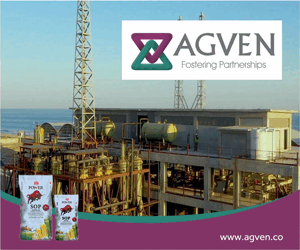- Web Desk Karachi
- Jun 30, 2025

2024: economic gains overshadowed by rising poverty, investment woes
The year 2024 was fraught with significant turbulence, both domestically and globally. Elections were held, and Pakistan completed a $3 billion 9-month IMF’s bail out while securing a $7 billion, a three-year programme. However, global developments, the newly elected government and fresh dollar inflows did little to ease challenges at the micro level. Political instability persisted, security challenges escalated, and economic pressures intensified, leaving both citizens and businesses increasingly anxious and financially strained.
At the macro level, Pakistan’s economy achieved a measure of stability in 2024, narrowly avoiding a sovereign default the previous year. Inflation moderated, twin deficits were brought within manageable ranges and remittances saw an uptick. Turmoil in Bangladesh diverted some apparel orders to Pakistan, boosting textile exports, while proceeds from IT exports also improved. The currency market remained relatively stable and foreign exchange reserves rose to respectable levels, aided by support from international donors.
Generous support from bilateral and multilateral partners was secured on the government’s pledge to tackle critical economic issues, including unsustainable state-owned enterprises and the energy sector’s circular debt. However, the burden of past economic mismanagement ultimately fell on families and businesses. Households endured a declining living standard, while businesses grappled with higher taxes and an increasingly challenging environment, prompting many to defer investment plans.
The latest poverty assessment is under way, according to the Pakistan Bureau of Statistics, but estimates suggest that nearly half the population now lives below the poverty line due to depreciating value of money and widespread job losses in a lagging economy. A recent outlook report by the Finance Division noted that investment in the manufacturing sector has plummeted into negative territory.
“The large-scale manufacturing (LSM) sector is navigating the challenges while demonstrating resilience”, noted the Finance Division report. “LSM growth declined marginally by 0.8 per cent during Jul-Sep FY2025, a slight improvement compared to the contraction of 1.0 per cent during the same period last year. On a month-on-month basis, the sector registered a modest growth of 0.5 per cent in September 2024, signaling a gradual recovery. However, on a year-on-year basis, it contracted by 1.9 percent”.
The tight monetary policy and the government’s stabilisation measures successfully curbed soaring inflation, bringing it down sharply from 28.3 per cent in January to 4.9 per cent in December. This progress prompted the State Bank of Pakistan (SBP) to ease its monetary stance. Interest rates, which stood at 22 per cent at the beginning of the year, were gradually but consistently reduced to 13 per cent by December 24, 2024.
Trade reportedly outperformed agriculture and industry in 2024, benefiting from the government’s relaxation of import restrictions. While the long-term investment dwindled, short-term avenues like stock market flourished. The capital market delivered exceptional performance, with the KSE-100 Index achieving a historical milestone, soaring to 1,12414 points by 24, December from 61,979 points in January 2024. Despite this remarkable growth, the Pakistan Stock Exchange (PSX) saw only seven initial public offerings (IPOs) during the year, collectively raising Rs8.4bn.
According to securities analysts, equities in Pakistan outperformed major asset classes in 2024, delivering a return of over 70 per cent, including dividends. Gold also posted a strong performance, with prices rising from Rs189,000 per 10 grams to Rs234,311, yielding a profit of 24 per cent. The dollar, however, showed a negative return of one per cent, slipping from Rs282 at the start of the year to Rs277 in December, in the open market.
Foreign exchange reserves also saw improvement, driven by loans, robust remittance inflows, and higher export proceeds. As per the latest figures from the SBP, reserves reached $16 billion, with $11bn held in SBP accounts.
Pakistan’s current account, heavily reliant on imports, remains a critical area of concern. A widening deficit can exert pressure on the exchange rate and drain foreign exchange reserves. However, recent data from the State Bank of Pakistan offers some relief. In November 2024, the current account posted a surplus of $729 million, a significant turnaround from a deficit of $148 million in the same month of the previous year. This marks the fourth consecutive month of a current account surplus, signaling a positive shift in the country’s external account balance.
The Federal Board of Revenue (FBR) has reported steady progress in tax and non-tax revenue collection. However, efforts to control wasteful spending and trimming government expenditure have yet to yield tangible results. While the real-time data is unavailable, the prospects for substantial improvement in fiscal management remain limited.
In 2024, Pakistan’s real estate market faced notable fluctuations, shaped by political instability, economic conditions, interest rates, and investor sentiment. The residential market struggled due to reduced affordability and declining investment activity.
eanwhile, the commercial real estate sector, which includes office spaces, retail outlets, and industrial plots, was also affected by high interest rates, causing businesses to hesitate in investing in commercial properties.






